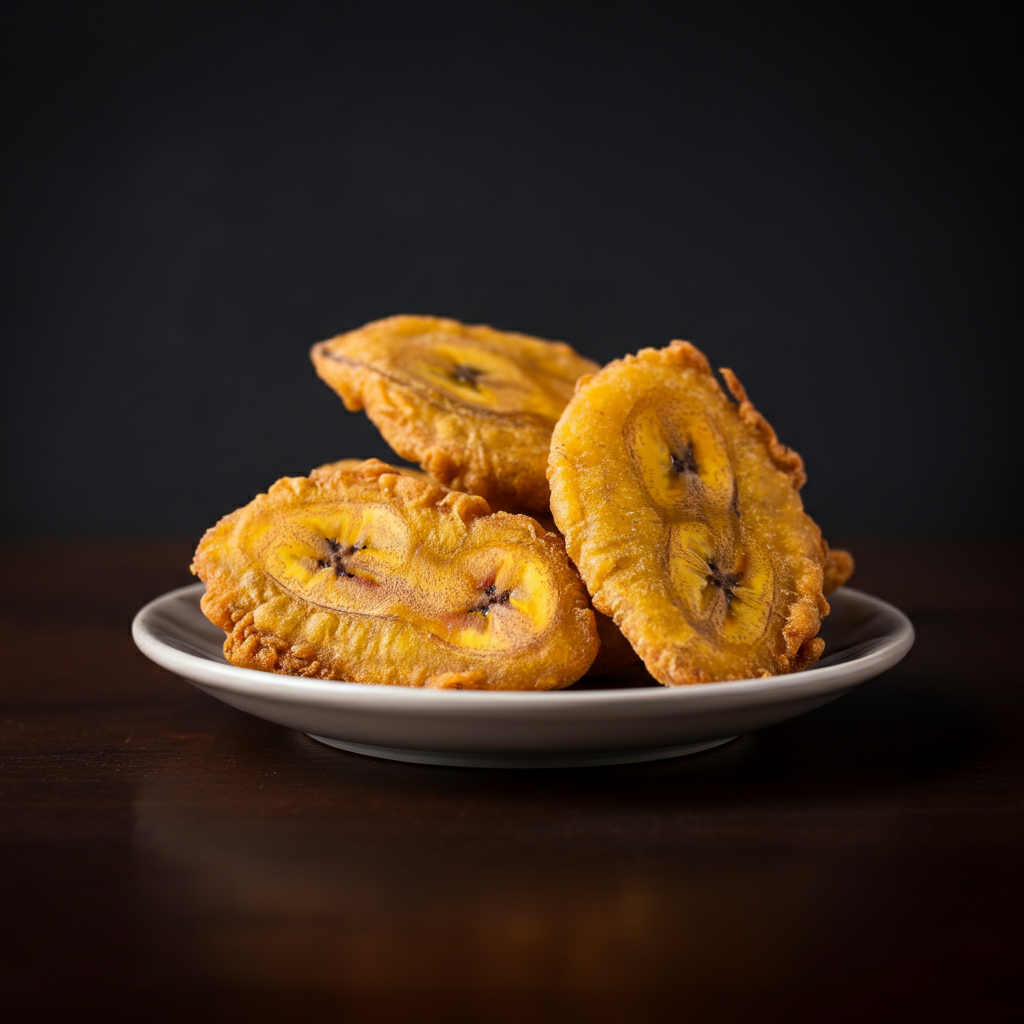Plantain
Sierra Leone
Often served boiled, fried, or as part of other dishes. It can be sweet or savory depending on the ripeness.

Origins and History
Plantains are a staple crop across much of West Africa, including Sierra Leone. Their cultivation predates colonial times, with evidence suggesting their presence for centuries. Precise origins within Sierra Leone are difficult to pinpoint definitively, but their integration into the national diet is undeniable. Plantains’ adaptability to various soil types and climates contributed to their widespread adoption, making them a crucial component of the country's agricultural landscape and cuisine for generations. The fruit's longevity and ability to be stored for extended periods also played a significant role in its prominence, especially before modern refrigeration techniques.
Cultural Significance
In Sierra Leone, plantains hold significant cultural importance. They are ubiquitous in everyday meals, appearing on tables across various social strata. They are featured prominently in celebrations and special occasions, representing abundance and prosperity. The preparation method can vary depending on the occasion and the region, reflecting diverse culinary traditions within the country. Certain recipes have been passed down through families for generations, embodying cultural heritage and identity. The simple plantain, therefore, transcends its culinary role and becomes a symbol of Sierra Leonean identity and communal bonding.
Traditional Preparation
Traditional preparation of plantains in Sierra Leone involves various methods, largely dependent on the fruit's ripeness. Green plantains are often boiled or fried, sometimes incorporated into stews and soups. Ripe plantains, with their sweeter flavor, might be fried until caramelized, creating a delightful side dish. They might also be mashed and used to thicken sauces or form the base for other dishes. The simplicity of preparation underscores the plantain's versatility and its integral role in ensuring food security for many Sierra Leonean families. Basic techniques and readily available ingredients are key to these traditional recipes.
Regional Variations
While plantains are a national staple, regional variations exist in their preparation and incorporation into dishes. Coastal communities might utilize more seafood-based recipes featuring plantains, while inland areas might lean toward vegetable-centric stews. Specific spices and seasonings might differ across regions, adding unique flavors and textures to the final product. These subtle differences reflect the diverse culinary landscape of Sierra Leone and the creative adaptability of its people in utilizing locally available ingredients. Even the basic act of boiling or frying a plantain can have slight variations based on local customs.
Modern Interpretations
Modern Sierra Leonean cuisine sees plantains adapted to contemporary tastes. While traditional methods remain popular, chefs are experimenting with new flavor combinations and techniques. Plantains feature in fusion dishes, incorporating international influences while retaining the core essence of the fruit. This reflects a growing interest in preserving culinary traditions while embracing innovation and catering to evolving palates. Plantain chips, for instance, are a popular snack, showcasing the plantain's versatility in a modern, convenient form.